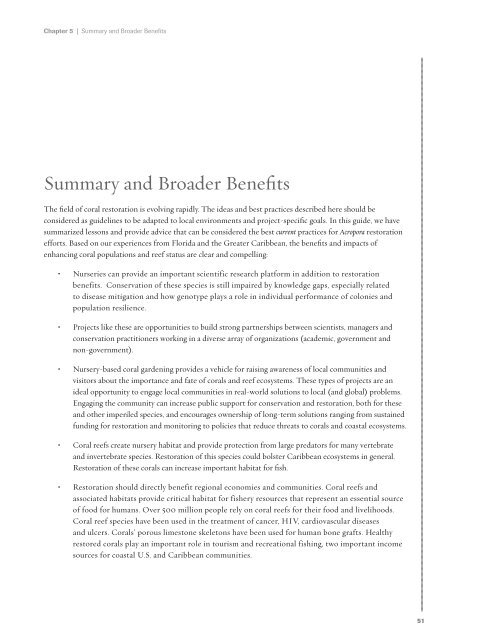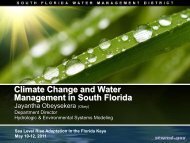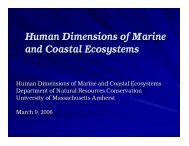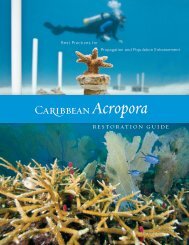Caribbean Acropora Restoration Guide - The Florida Reef ...
Caribbean Acropora Restoration Guide - The Florida Reef ...
Caribbean Acropora Restoration Guide - The Florida Reef ...
You also want an ePaper? Increase the reach of your titles
YUMPU automatically turns print PDFs into web optimized ePapers that Google loves.
Chapter 5 | Summary and Broader Benefits<br />
Summary and Broader Benefits<br />
<strong>The</strong> field of coral restoration is evolving rapidly. <strong>The</strong> ideas and best practices described here should be<br />
considered as guidelines to be adapted to local environments and project-specific goals. In this guide, we have<br />
summarized lessons and provide advice that can be considered the best current practices for <strong>Acropora</strong> restoration<br />
efforts. Based on our experiences from <strong>Florida</strong> and the Greater <strong>Caribbean</strong>, the benefits and impacts of<br />
enhancing coral populations and reef status are clear and compelling:<br />
• Nurseries can provide an important scientific research platform in addition to restoration<br />
benefits. Conservation of these species is still impaired by knowledge gaps, especially related<br />
to disease mitigation and how genotype plays a role in individual performance of colonies and<br />
population resilience.<br />
• Projects like these are opportunities to build strong partnerships between scientists, managers and<br />
conservation practitioners working in a diverse array of organizations (academic, government and<br />
non-government).<br />
• Nursery-based coral gardening provides a vehicle for raising awareness of local communities and<br />
visitors about the importance and fate of corals and reef ecosystems. <strong>The</strong>se types of projects are an<br />
ideal opportunity to engage local communities in real-world solutions to local (and global) problems.<br />
Engaging the community can increase public support for conservation and restoration, both for these<br />
and other imperiled species, and encourages ownership of long-term solutions ranging from sustained<br />
funding for restoration and monitoring to policies that reduce threats to corals and coastal ecosystems.<br />
• Coral reefs create nursery habitat and provide protection from large predators for many vertebrate<br />
and invertebrate species. <strong>Restoration</strong> of this species could bolster <strong>Caribbean</strong> ecosystems in general.<br />
<strong>Restoration</strong> of these corals can increase important habitat for fish.<br />
• <strong>Restoration</strong> should directly benefit regional economies and communities. Coral reefs and<br />
associated habitats provide critical habitat for fishery resources that represent an essential source<br />
of food for humans. Over 500 million people rely on coral reefs for their food and livelihoods.<br />
Coral reef species have been used in the treatment of cancer, HIV, cardiovascular diseases<br />
and ulcers. Corals’ porous limestone skeletons have been used for human bone grafts. Healthy<br />
restored corals play an important role in tourism and recreational fishing, two important income<br />
sources for coastal U.S. and <strong>Caribbean</strong> communities.<br />
51











